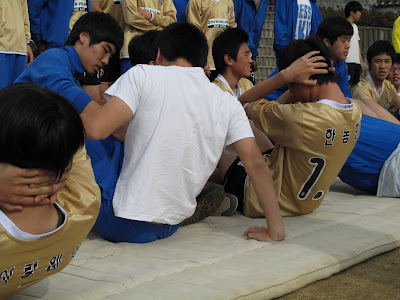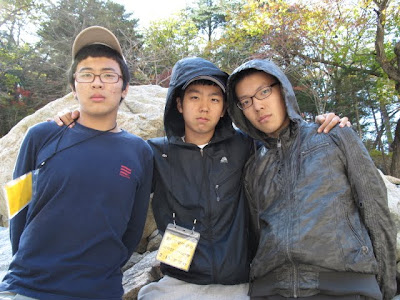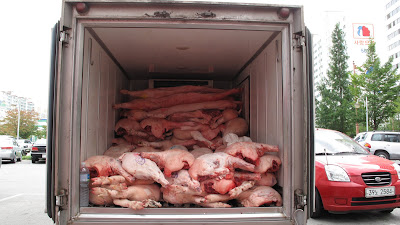He had gone fishing that afternoon and brought back a bucket full of fish and another bucket of snails. He invited me to a friend's restaurant where they were working on turning the fish into dinner. When I arrived at the restaurant, I went out into the back courtyard. Two men were squatting by a drainage grate. On closer inspection, I saw that they were gutting the fish. They had just started so the majority of the fish were still alive, shifting about in a bucket of rock salt. The men were running their thumbs up the belly of each fish. The force would reverse the innards out of the fish's anus. I did not see them use knives at any point during the gutting process.
After gutting, the fish had to be descaled. The men did this by repeatedly rubbing the fish with rock salt and rinsing them down. When the fish were gutted and cleaned, the men moved on to cutting the vegetables and heating up water. An aluminum pot filled with small snails was already boiling and was ready for seasoning. Another burner and pot were set up for the fish. At this point, Mr. son explained how the fish would be cooked and eaten. Our meal would consist of two soups. The first would be snail soup. The second would be the fish soup. Traditionally, the kind of fish we had are boiled, mashed into paste, and then boiled again. Finally, greens and spices are added and allowed to cook a little more.
When everything had cooked down, we ate. The snail soup was excellent. The flavor of the snail soup was completely new to me. The fish paste soup was much hardier than I had expected. Rice was also served and everyone mixed some into their soup. Mr. Son produced some kind wild berry liquor that he made himself and, of course, Soju was also served. Eventually, the wives and children of some of the men showed up to join us. Having entire families at the table really transformed the meal into a kind of community event. It made me think about how different food culture and food preparation are in the United States. I think this is one of the few meals I have had where the main ingredients were gathered rather than raised. The simplicity of the meal has definitely raised my interest in more traditional food dishes and preparations. Until next time...




 This past weekend, I went on a day hike to
This past weekend, I went on a day hike to 







